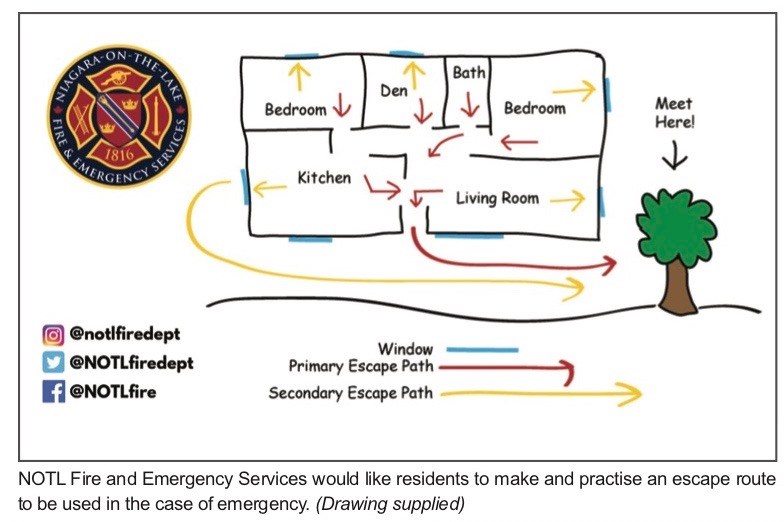
We should all know by now that smoke and carbon monoxide alarms are legally required in our homes. Most of us are aware we should be testing the alarms monthly, changing the batteries at least once per year, and checking that the alarms are not expired.
With working alarms, you ensure your family is properly protected from the dangers of a fire or carbon monoxide emergency, however, you shouldn’t stop there. Having a home escape plan is a vital component of keeping your family safe. You may have talked about what to do if your alarms are sounding, but how many of you have planned and practised a home escape plan? It seems like a simple concept that most people don’t think about, because how hard can it really be?
You may remember as children the days of Sparky’s Pals coming into your school gym and teaching you about fire safety, and how to escape your homes in a fire. How many of you, though, have done this with your family or children? Planning and practising this basic task can help to ensure your family survives a fire or carbon monoxide emergency.
Your family members should know two ways out of every room (if possible), and what your smoke and carbon monoxide alarms sound like. Children should be shown how to check for a fire on the other side of a door before they open it, and what to do if they encounter smoke. Parents should have a plan for who is responsible for getting their children, and who is going to call 911. Choose a meeting place so everyone knows where to go in case you are separated. These are all the basics of a well-planned and practised home escape plan.
Just like in school, you might remember hearing the sound of the fire alarm, being told by your teacher to line up single file, and follow them outside. We did it so often that it almost became automatic, and we didn’t need to be told what to do, after all, practise makes perfect, right?
In a real emergency situation, it may not be as simple. If there is an actual fire in your home you have a very short time to escape safely. There could be smoke in the hallway or even flames visible. If you have practised your home escape plans with your family on a regular basis, you should be able to get all your family members outside safely to your meeting place, and call 911 from outside your home. A well-planned, and practised home escape plan will help you remain calm in an emergency situation and do exactly what you have practised. Remember, in an emergency, every second counts!
Home escape planning should always be done as a family. Timing how long it takes you to get to your meeting place can be a fun game to play as a family, and with young children, it helps to get them used to the plan.
Remember smoke and carbon monoxide alarms are not intended to scare you, their sole purpose is to warn you of a fire or carbon monoxide emergency. They are an early warning device that gives you and your family sufficient time to escape. Testing your smoke and carbon monoxide alarms monthly as a family will not only help ensure you are safe, but will help young children get used to the sound and understand what each alarm sounds like.
If you have any questions or would like a home escape plan sheet for your family, reach out to us at 905-468-3266 or email [email protected].
Brad Disher
Fire Prevention & Public Education Officer,
NOTL Fire & Emergency Services
The NOTLFES is writing a regular column with The Local related to all things fire. Expect to see articles related to fire safety, training, fire department initiatives or developments within the department. The NOTLFES understands our community, and recognizes one of the best ways to ensure we reach every member of the community is through using all media platforms available. Thank you for reading, and looking forward to the articles that we produce.